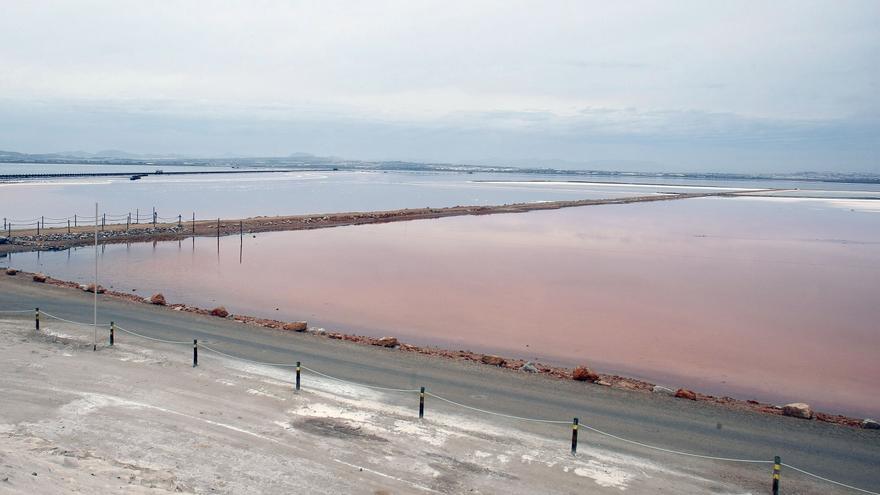Spanish science has just taken a first step in the challenge of being able to design new strategies for fight cancer based on the use of natural compounds after having identified the anticancer capacity of a pigment present in the salt flats of Santa Pola (Alicante)from ‘in vitro’ assays with cells isolated from several different types of breast tumors.
This important finding is the result of work carried out by the Applied Biochemistry research group of the University of Alicante (UA), in collaboration with the Dr. Balmis de Alicante General University Hospital (HGUDB) and the Alicante Health and Biomedical Research Institute. (ISABIAL).
«We have verified in ‘in vitro’ tests the antitumor capacity of this pigment in breast cancer with isolated cells. We have not worked with complete tissues, with a biopsy sample, but with cells isolated from several different types of breast tumors» , explained to EFE the professor of Biology and director of the group, Rosa María Martínez.
LIMITS THE GROWTH OF CANCER CELLS
During laboratory tests it was found that this pigment, called bacteriorruberin, prevents the growth of cancer cells and that their metabolism works normally, «so if this result were reproduced on breast tissue, we would be before a tumor blocking effect», indicated Martínez.
This pigment is produced by microorganisms, the ‘halophilic archaea’, in order to protect themselves from the sun, which are found both in the salt flats of Santa Pola and in the Torrevieja lagoon and in the salt flats located in the interior of the province of Alicante , has specified Martinez.
‘Halophilic archaea’ require a hypersaline environment to thrive, so they can be found primarily in high salinity coastal marshes, inland salt flats, or hypersalt lakes.
The discovery of the antitumor capacity of this pigment, published in the prestigious journal Nature Scientific Reports, began with the development of the doctoral thesis of Micaela Giani, from the UA Applied Biochemistry research group, according to sources from this institution. academic.
antioxidant capacity
In it, the already doctor ends with ‘in vitro’ tests the antioxidant activity of the pigment and its effect on enzymes (biocatalysts) that are involved in pathologies such as diabetes or metabolic syndrome.
“After publishing these results, it was then that we considered what would happen if we added the pigment to cancer cells based on the hypothesis that, being a pigment with an antioxidant activity almost 300 times higher than that of other antioxidants, it could limit the ability of these cells to grow and reproduce”, Martínez pointed out in a statement from the UA.
In this second phase, the research group has worked in collaboration with Dr. Gloria Peiró, HGUDB pathologist and professor in the UA Department of Biotechnology, and Yoel Genaro Montoyo-Pujol, PhD in Experimental and Biosanitary Sciences and also a researcher at the UA, both belonging to the ISABIAL breast cancer and immunology research group.
Thanks to this collaboration, it was possible to verify ‘in vitro’ the effect of this pigment in cell lines representative of different intrinsic phenotypes of breast cancer and in a line of healthy breast tissue.
«And we have reached the conclusion that, at a certain dose, the pigment does not cause any harmful effect on the healthy cell, but it does limit the growth capacity of the neoplastic cells» (which could give rise to a tumor), has revealed Martinez.
NEXT STEP: ASSAY ON BIOPSY TISSUE SAMPLES
He has highlighted to EFE that the significance of the result of this work is, «of course, very great. It is a small first step, but if the investigation continues, going through the phase of tissue samples from biopsies or surgical pieces, is tested with more types of tumors and it is proven that the same result is obtained in all of them, we would be looking at a pigment that would allow us to approach a new way of treating tumors with a natural compound», he pointed out.
The ultimate goal is that it can be used as a natural compound for this type of tumor, thus preventing other treatments based on chemotherapy and radiotherapy, which «have many unwanted side effects,» he said.
Being a natural compound, a priori its side effects are expected to be occasionally minimal compared to chemotherapy, although this last point is yet to be investigated, he added.
Related news
«The antitumor capacity of this pigment was suspected and it had been described as an antioxidant, preventing oxidation from ultraviolet radiation or exposure to toxic compounds, but no serious studies had been done (until now) to really prove its both antioxidant and antitumor capacity», explained Martínez.
After this discovery, the researchers have «two open fronts». On the one hand, to continue analyzing the effect of the pigment with other types of tumor cells (for example, liver or lung) and, on the other, as a continuation of the study already begun with breast tumors, to test this natural compound in tissue samples from biopsies or surgical specimens obtained directly from patients to corroborate whether or not the results observed in the trials ‘in vitro ‘with isolated cells.

